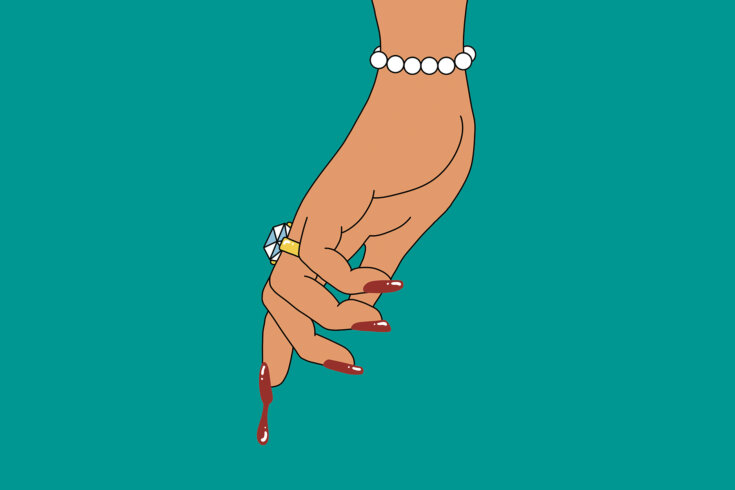It started the way so many bad habits—or good vices—do, with peer pressure.
“I’m addicted,” my cousin told me.
“You’ll love it,” my friend promised.
And that’s how, just short of forty-three years after its premiere, I shelled out $24.99 and began watching the first season of Dynasty.
The original Dynasty came out in 1981, created—depending on who you believe—as either a ready knock-off of the wildly popular Dallas, or as a groundbreaking series about “a person’s search for a particular type of love” in the tradition of Steinbeck, Dickens, and Dostoevsky. The latter assertions, made earnestly by the show’s cocreator Esther Shapiro, elicited laughter and scorn from grumpy reporters after a viewing of the three-hour premiere.
Centred in gauzy focus on the super-rich Carrington family, Dynasty was originally panned as “an orgy of mediocre television,” “painfully corny,” and an “overstuffed turkey.” But as its own characters would do time and time again, Dynasty clawed its way to the top, shoving Dallas into the proverbial swimming pool to become the top-rated TV series of the time.
The pleasures of Dynasty aren’t hard to find. There are the sumptuous sets, the sweeping score, and a cast of some of the hottest actors of the day, engaged in all manner of passionate entanglement. By the time the clever, carnal, conniving Alexis Carrington stalked into the courtroom at the end of season one, I was hooked. But hooked on what?
There are universal themes: mother and father issues, violence, ambition, class, matters of health and sexuality and prejudice, and—yes, Esther—the search for many different kinds of love. There is the scripting (clever) and the way it’s delivered (breathily). There is the action (constant) and the cliffhangers (effective). As Mark Muro wrote in the Boston Globe in 1983, “It’s as if they jammed five segments of any other soap opera into each hour. Bang, bang, bang: kidnapping, bigamy, rape, financial ruin, death-bed marriages, adultery, lost sons, babies falling from roofs?!?!?!?! ” (Emphasis and frantic punctuation mine, as I haven’t gotten to that scene and was therefore transcribing my own spoiler.)
There is the hair and the hats and the makeup—and there are the clothes. Clothes so lavish costume designer Nolan Miller once spent $100,000 (US) on just two episodes. The clothes are a delight of slacks and gowns, of sequins and pussy bows and shoulder pads so big Linda Evans once said she and Joan Collins couldn’t walk through a door at the same time, and she probably wasn’t joking.
The clothes make clear what viewers quickly discover: that although Dynasty ostensibly centres on Blake Carrington, the women around him are the real heart of the show. There’s Krystle, sweet and steadfast. Fallon, sharp and protective. And there’s Alexis, arguably one of television’s greatest female characters. A ravishing middle-aged woman, impeccably appointed and rarely without a glass of champagne, equally unapologetic about her current schemes and her past scandals, like those beach boys in Kauai or whatever happened on the Greek tycoon’s yacht that night.
Literary allusions aside, Dynasty is a soap opera, as maligned, or at least dismissed, a form of entertainment as the romance novels Joan Collins’s sister, Jackie, made her own fortune writing. A room full of men laughed openly at Esther Shapiro for the very idea her show could have any relation to great works of literature. And maybe this is where the guilt of the pleasure lies. We aren’t meant to take some things seriously. “Critics dismiss it as trash, but we do create women who are not victims,” Shapiro told a female reporter in 1988. “It’s pure entertainment for women. That’s something that has been looked down on.”
It’s true while watching Krystle (plum slacks and high-necked blouse) and Alexis (periwinkle shirt and pleated culottes) passionately tearing up a room in a flamboyant cat fight—complete with torn pillows, ripped clothing, shattered flower vases, and a smashed painting of Blake—I wondered if I should have enjoyed the scene quite so much.
But if there’s anything I’ve learned from spending a season with Alexis Carrington, it’s never to deprive yourself of pleasure. And not to spend any time feeling guilty about it.





